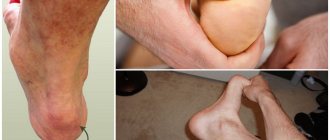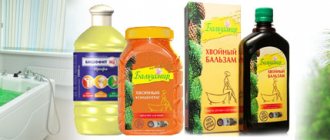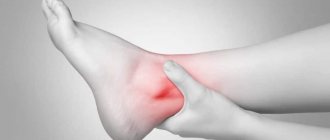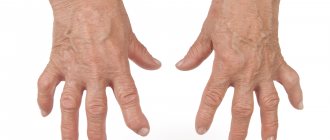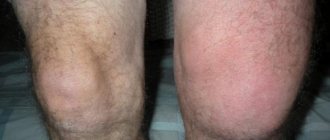Symptoms and signs of joint psoriasis
Psoriatic arthritis is a chronic inflammatory disease of the joints that develops against the background of psoriasis.
It often occurs due to a weakened immune system. Other reasons for the appearance, doctors include, are nervous strain or severe emotional stress due to a skin disease, as well as various joint injuries.
In some cases, this disease develops as a result of taking medications belonging to the category of non-steroidal anti-inflammatory drugs, transmission of a virus, as well as abuse of tobacco products and alcoholic beverages.
There are a number of symptoms and signs that can help determine the onset of psoriatic arthritis:
- pain in the joints late in the day, associated with movement;
- changes in the usual shape of the joints, noticeable visually;
- significant stiffness of movement in the morning;
- noticeable discoloration of the skin in a bluish or burgundy color in the affected area;
- reduction in finger length;
- violations of the elasticity and density of ligaments, leading to dislocations in different directions;
- severe pain in the heels that does not go away over time;
- tendon dactylitis;
- damage to nails with a change in their usual color;
- damage to the big toes;
- noticeable external changes in small joints, mainly located in the hands and feet.
There are five types of psoriatic arthritis, depending on the location of the inflammatory process:
- Symmetric. This type of disease is the most common among all and implies the presence of damage to symmetrical joints on both sides.
- Asymmetrical, which affects the interphalangeal joints of the foot and hand, as well as the hip and knee joints.
- Distal interphalangeal , mainly found in males and affecting the fingers or toes.
- Spondylitis is a type of psoriatic arthritis in which the intervertebral joints become inflamed, resulting in fusion of the vertebrae in the lumbar and cervical region.
- Mutilating arthritis , affecting the joints of the lumbar spine and hands. The main danger of this type is that, if not treated correctly, it can cause serious joint deformities and even disability.
Medication method
It is possible to cure a complex disease if you weaken the inflammatory process, prevent the development of erosion, and then rehabilitate the motor joint system. Moreover, treatment of skin and joint injuries is carried out simultaneously.
In case of severe pain and at the discretion of the doctor, the drug can be injected directly into the joint. In severe stages, blood purification is prescribed - plasmapheresis. Typically, this process reduces inflammation and eliminates symptoms of the disease.
In treatment, the following means are used:
- Immunomodulators;
- Corticosteroid hormones;
- Anti-inflammatory drugs;
- Chondroprotectors (for bone tissue regeneration).
Some of the popular anti-inflammatory drugs are diclofenac, ibuprofen, and nimesulide. Also, Alpha D3 Teva is used to reduce the development of psoriatic arthritis; it reduces the progression of the disease.
Benefits of treating psoriatic arthritis with folk remedies
Properly selected folk remedies have obvious benefits in the treatment of psoriatic arthritis.
Herbal medicines are characterized by the following properties and capabilities:
- effective fight against pain and inflammatory processes;
- accessibility and cost-effectiveness;
- safety of use (as a rule, folk remedies have a much less aggressive effect on the body and cause virtually no side effects).
A variety of decoctions, tinctures, compresses and baths will be a reliable addition to drug therapy prescribed by the doctor and will help to quickly cope with the manifestations of psoriatic arthritis.
Recipes for effective traditional medicines
In home therapy for psoriatic arthritis, widely known, reliable and effective folk remedies such as celery root, birch and lilac buds, marsh cinquefoil and wood lice are mainly used.
Lilac bud tincture
Lilac bud tincture has strong analgesic and anti-inflammatory properties.
To prepare it, you should collect raw materials in an ecologically clean area in early spring.
Two glasses of lilac buds must be filled with medical alcohol or high-quality vodka in an amount of 500 ml.
Leave in a dark place for two weeks and shake vigorously from time to time. Strain the finished product thoroughly and use it to rub the affected areas.
Celery root infusion
Celery root rightly plays one of the leading roles in the folk treatment of psoriatic arthritis. To prepare an effective healing infusion, you need to pour one tablespoon of thoroughly washed and chopped celery into two glasses of boiling water and place it in a dry, dark place. The product should infuse for 4 hours. After this, it should be strained through a strainer or gauze and poured into a dark glass container. Take 2 tbsp. infusion before meals, twice a day for two weeks. For taste and to enhance the beneficial effect, you can add a little honey.
Birch bud decoction
Birch buds are rich in ascorbic acid, fatty acids, grape sugar, tannins, phytoncides and other components that ensure rapid healing of the skin.
Two tablespoons of kidneys should be poured into two glasses of boiling water and left for one hour.
It is very convenient to use a thermos for these purposes. The finished decoction must be drunk within one day, divided into four equal parts.
Marsh cinquefoil ointment
Marsh cinquefoil is another well-known plant that is used for joint diseases due to its warming, analgesic and wound-healing effect.
An ointment for the treatment of psoriatic arthritis can be easily prepared on its basis.
To do this you will need:
- 1 tube or jar of any hypoallergenic cream, maybe for children;
- 3 drops of vitamin E;
- 1 tsp honey;
- 1 tsp alcohol solution of red pepper.
Mix the ingredients thoroughly until smooth and apply to affected areas of the body 2 times a day. This product must be stored in the refrigerator.
Chickweed herb compress
Woodlice grass is a unique herbal remedy rich in vitamins C, E and K, as well as zinc, magnesium, iron, organic acids, essential oils, lipids and tannins. For psoriatic arthritis, compresses are made from this plant that can relieve pain and heal lesions.
Fresh herbs must be steamed and wrapped in gauze, and then the resulting compress must be applied to the affected area of the body for 20-30 minutes.
Wraps
For wraps for psoriatic arthritis, it is recommended to use fresh whole leaves of cabbage and coltsfoot.
They are applied to a clean skin surface, after steaming and smearing with a small amount of honey.
Lilac leaf wraps are also effective.
In a steamed state, they need to be applied to the sore joints, secured with a bandage and insulated with a towel. The therapeutic effect will occur in two weeks.
Therapeutic baths
A significant therapeutic effect is provided by baths based on coniferous plants. To do this, you need to pour a few spruce or pine branches into a pan of boiling water, leave for 15-20 minutes and pour into a bath of warm water. It is recommended to do the procedure no longer than half an hour. For maximum therapeutic effect, 7-8 baths are required, with a three-day break between them.
Similar baths can be done with string and chamomile.
Folk remedies for psoriatic arthritis
Many people are familiar with the diagnoses “psoriasis” and “arthritis”.
Unfortunately, sometimes patients with psoriasis experience psoriatic arthropathy (psoriatic arthritis), which affects the joints. But there is a way out. Scientists claim the benefits of certain plants and even the bark of several trees, thanks to which the symptoms of the disease weaken. In addition, nutritional supplements containing active ingredients are produced, and they have a positive effect on the course of the disease. In the future, doctors will conduct additional research into how herbs and nutritional supplements affect the human body. To date, scientists have conducted several small experiments. It turns out that some vitamins and herbs have anti-inflammatory properties. It's best to check with your doctor before including any home remedies in your treatment plan for psoriasis, arthritis, and psoriatic arthritis. “You should try natural remedies that help in the fight against psoriasis or arthritis. But understand that treating psoriatic arthritis often requires serious medications,” says Shakab Qureshi, MD, director of rheumatology at Christiana Care Health System, located in Newark, Delaware (USA). It is worth trying natural remedies that help in the fight against psoriasis and arthritis. But we must understand that the treatment of psoriatic arthritis often requires serious medications. Psoriatic arthritis can cause many destructive processes in the body if it is diagnosed, for example, at a late stage. Then strong drugs are required. For those who want to try folk remedies, we publish a list of the most popular products that relieve pain during the development of psoriatic arthritis. Remember that they do not completely cure the disease. Additionally, it is very important to talk to your doctor before starting a new treatment, even if it is a natural medicine. You need to ask a specialist how long you can eat them or take them as medicine. 1. Capsicum Capsaicin, a natural compound found in capsicums, relieves arthritis pain in some people. Capsaicin is an alkaloid found in various types of capsicums. What are alkaloids? This is a group of nitrogen-containing organic compounds of natural origin (most often plant-based). Capsaicin is found in the following topical creams:
- Zostrix;
- Kapzasin-P.
These creams can be purchased at pharmacies without a prescription. Apply them three to four times a day. Cayenne pepper helps people with osteoarthritis. This is evidenced by the results of a study published in March 2014 in the Progress in Drug Research book series. Remember, the composition of the cream can negatively affect the condition of the skin. “Be sure to wash your hands with soap and water after handling the cream,” says Dr. Qureshi.
2. Wintergreen The Wintergreen plant also has other names:
- eastern wintergreen prostrate;
- wintergreen.
An extract from this plant has long been used by Native Americans (North American Indians) as a remedy for rheumatism. Polish researchers studied how an extract from the leaves of eastern wintergreen prostrata affects health. Experiments have shown that wintergreen has an anti-inflammatory effect. They published their findings in December 2014 in the journal Molecules. Always use this only according to the instructions on the package.
3. Oil of wintergreen Oils of plants such as:
- wintergreen;
- menthol;
- eucalyptus;
- camphor.
Creams with a similar composition are called distraction agents because they distract from the actual pain when applied to the skin - they affect the nerve endings located on the skin. These are natural pain relievers found in over-the-counter products like Icy Hot and other pain balms. Scientists in China conducted experiments on rats and found that wintergreen oil (methyl salicylate 2) had anti-inflammatory effects. They reported the results of their study in March 2015 in the immunopharmacology journal International Immunopharmacology. Again, we remind you that the use of these oils may have a bad effect on the skin if it is inflamed.
4. Aloe Vera A topical preparation based on the Aloe vera plant in gel form is often used in medicine because this plant reduces skin burning. The plant is often included in moisturizing creams and body lotions. Such gels soften skin affected by psoriasis. They belong to the group of anti-inflammatory drugs. In June 2014, the journal Current Drug Discovery Technologies published the study data. Scientists say topical products that contain aloe vera may act as an alternative to non-steroidal anti-inflammatory creams. It is better to apply the gel after a shower and after washing your hands. Aloe extract is added to gels and is also available in the form of dietary supplements (tablets). By the way, aloe-based tablets help with diabetes, scientists say: they regulate blood sugar levels.
5. Fish Oil Fish oil contains omega-3 fatty acids, which are converted into anti-inflammatory chemicals in our bodies. Fish oil is found in cold-water oily fish:
- mackerel;
- salmon;
- herring;
- tuna;
- halibut;
- cod.
Omega-3 fatty acids have powerful anti-inflammatory effects. As a result, they help in the treatment of chronic diseases, in particular arthritis. This is stated in the research report, which was published in the next issue of the Journal of Physiology and Biochemistry in June 2015. However, scientists want to continue to conduct long-term clinical studies to see how fish oil reduces inflammation, stiffness and joint pain in the morning, Qureshi says. Be careful if you are taking antithrombotic drugs that thin your blood. After all, fish oil can thin the blood. The Arthritis Foundation recommends taking fish oil as a dietary supplement. It contains a minimum of 30% EPA (eicosapentaenoic acid) and DHA (docosahexaenoic acid). Docosahexaenoic acid, along with eicosapentaenoic acid, are among the most valuable Omega-3 polyunsaturated fatty acids for human health. DHA is practically absent from vegetable fats, but is found in marine fish oil.
6. Turmeric The active ingredient found in turmeric, a spice from India, is called curcumin. It helps relieve arthritis symptoms due to its anti-inflammatory properties. This is stated in a research report that was published in 2013 in the journal BioFactors. Curcumin is a natural dye found in the leaves and roots of turmeric. It is found in dietary supplements as a concentrate. Representatives of the American Food and Drug Administration say that it is safe to take 1.5-3 grams of turmeric per day. However, the National Psoriasis Foundation suggests consulting with a doctor who practices naturopathy to determine the right dosage for you.
7. Willow bark Willow bark reduces arthritis pain in some patients, say German scientists. The results of their report were published in August 2013 in the journal Phytomedicine: The International Journal of Phytotherapy and Phytopharmacology. The active substance found in willow bark is salicin. When you break down salicin, you get salicylic acid. It reduces the production of pain-producing chemicals in the nerves, Qureshi says. The chemical composition of salicin is similar to acetylsalicylic acid (aspirin). Willow bark can be purchased at pharmacies without a prescription in tablet form. As a rule, products containing salicin are usually safe. But sometimes they lead to the following side effects:
- cause stomach upset;
- increase blood pressure;
- provoke skin rashes.
8. Probiotics Researchers from New York University School of Medicine conducted an experiment. They found that patients with newly diagnosed psoriatic arthritis had lower amounts of beneficial bacteria in their gut than healthy people. The research results were published in January 2015 in the medical journal Arthritis & Rheumatology (Arthritis and Rheumatology). In such cases, probiotics help. What are probiotics and when are they eaten? These are medications or biologically active food additives that contain live microorganisms that are representatives of the normal human microflora. The purpose of taking probiotics is to restore the disturbed balance of microorganisms inhabiting various human mucous membranes. Probiotics are found in yogurt and dietary supplements. Moreover, according to a study published in June 2013 in the journal Gut Microbes, probiotics have anti-inflammatory properties. Beneficial bacteria also affect the body in diseases such as psoriasis and psoriatic arthritis.
9. Boswellia Boswellia is also commonly known as incense tree. Preparations based on bosswellia have an anti-inflammatory effect and help in the treatment of various types of arthritis. Doctors from Memorial Sloan Kettering Clinic, located in New York, say this. Preparations based on bosswellia bark are available in tablet form. You need to take 300-400 mg three times a day, say representatives of the Arthritis Foundation. Attention! Topical creams made from frankincense bark may irritate skin affected by psoriasis.
10. Vitamin D There is a relationship between diseases such as psoriasis and psoriatic arthritis and low levels of vitamin D. Scientists say this, based on research published in July 2015 in the Journal of Dermatology. According to Qureshi, there is currently no conclusive evidence that vitamin D is beneficial for conditions such as psoriatic arthritis. But you can ask your doctor to check your vitamin D levels. You can discuss with your doctor whether vitamin D supplements may help relieve your symptoms. Remember that milk and salmon contain a lot of vitamin D.
Those patients who take herbal dietary supplements (dietary supplements) should remember that this area is not as well studied as, for example, the use of prescription drugs. Dietary supplements can cause serious side effects, especially when taken in combination with prescription medications. In addition, they can have a negative effect on inflamed skin. According to Qureshi, you should always check with your doctor about taking dietary supplements and using topical medications, even if they are herbal. Thanks to the gifts of nature, there are many useful herbs, trees and plants in the world, not to mention food products of natural origin that serve humans in excellent service. If you have skin diseases and inflamed areas, you should apply topical creams with caution and check them for the presence of an allergic reaction in yourself, even if the creams are plant-based.
Herbal preparations
There are other herbal remedies that are effective in treating psoriatic arthritis.
Burdock root tincture is suitable for external and internal use. The peeled and crushed root should be placed in a glass container and filled with alcohol 3 cm above the raw material.
Place in a dark place and leave for 21 days, shaking occasionally. Use the prepared tincture to lubricate affected joints, and also take 1 tablespoon before meals. three times a day.
Aloe compress has an anti-inflammatory and healing effect. The leaves need to be grated and mixed with five drops of vegetable oil. Apply to affected areas in the evening, before bed.
External means
Baths
Treatment of psoriatic arthritis at home involves a course of baths prepared with spruce branches. Freshly cut branches are poured with boiling water and left for an hour and a half. When the water has cooled to a temperature of 38 degrees, feet or hands are immersed in it. After the procedure, you need to dress warmly, go to bed, and lie down for at least an hour. The optimal course of therapy lasts at least 5-7 baths.
Baths for psoriasis can be made from flax; a natural product is very often used in folk treatment. Dry seeds are heated in a hot frying pan, wrapped in soft cotton cloth, used as compresses, and left overnight. Additionally, the compress can be secured with a bandage.
Important information: Treatment of psoriasis with sea buckthorn oil
To eliminate the symptoms of pathology, taking baths based on a decoction of chamomile is practiced; you will need:
- take 300 inflorescences;
- pour 5 liters of boiling water;
- leave for 2 hours.
Afterwards, the composition is filtered and added to a bath of water. The procedure is taken every other day for 20 minutes, the recommended course is 15 baths.
Excellent results can be achieved by taking salt baths. After the procedure, you need to dress warmly, go to bed and lie down for at least an hour.
Ointment
Traditional ointments are prepared against the signs of psoriatic arthritis; for example, a good option is a product based on eucalyptus oil. As excipients, the composition contains flowers of sweet clover, inflorescences of St. John's wort, and hop cones.
To prepare the product, the raw materials must be crushed, then a couple of tablespoons of the composition are measured, mixed with 50 ml of Vaseline, and stirred. The finished ointment is stored in the refrigerator for a week.
Medicines for psoriatic arthritis are prepared from marsh cinquefoil. The product warms up perfectly and restores cartilage tissue. To prepare any cream you will need to mix it with the following ingredients:
- honey;
- red pepper tincture;
- cinquefoil;
- liquid vitamin E.
All components are quickly mixed, applied to areas of tissue affected by psoriasis, treatment must be carried out 4 times a day. The composition should be stored in the refrigerator.
The ointment can be prepared from sweet clover or St. John's wort. To do this, take 2 tablespoons of crushed raw materials, combine with 50 g of cream or Vaseline, and grind until smooth.
Rubs, compresses
Some patients prefer the use of chickweed. The plant is widespread throughout the country; it grows everywhere like a weed. The grass stems must be well dried and placed in shoe insoles, which are then worn on bare feet. After walking, limbs should be washed with warm water. After a couple of sessions, a pronounced analgesic effect disappears.
Potato-based recipes occupy a special place among folk remedies for psoriatic arthritis. It is necessary to select slightly green tubers, wash them well, and chop them together with the peel.
The resulting mass is placed in hot water, heated to 38 degrees, and used for a compress. The potatoes are placed on gauze; the thickness of the layer should not exceed 2 cm. It is best to carry out the procedure at night; the compress is fixed on top with cling film. The duration of the course of therapy is a week, then sessions are continued as needed.
Garlic-based recipes received positive reviews:
- grate the garlic, measure out 10 drops;
- diluted with warm milk;
- moisten the gauze bandage;
- applied to the joints.
Important information: How to take mumiyo for psoriasis?
The skin can be pre-lubricated with a rich cream.
For effective rubbing, take medical alcohol and dandelion flowers in equal proportions, leave in a dark place for two weeks, filter through two layers of gauze. Treat the joints with the tincture and rub until a moderate burning sensation appears. Then the joints are insulated, you can put on warm pants, a sweater and go to bed.
Treatment with folk remedies for psoriatic arthritis includes wrapping. For the procedure, take leaves of burdock, cabbage, coltsfoot.
Rubs are prepared from burdock rhizome. You need to take the root, chop it, pour boiling water over it until the liquid completely covers the vegetable. The broth is infused for three weeks, always in a dark place.
After this time, the composition is filtered and used for daily treatment of joints.
Diet recommendations
The therapeutic diet for psoriatic arthritis involves eating plenty of fruits and vegetables. The following options are especially recommended:
- sea buckthorn, raisins and rowan;
- peaches, pineapples and kiwi;
- lemon and lime;
- directly pressed juices;
- baked apples;
- hazelnuts and almonds;
- dates;
- herbal teas;
- steamed fish;
- celery, spinach and sorrel;
- turkey and lamb;
- dairy products.
During treatment, you must refrain from salt, pepper, concentrated fish and meat broths, as well as alcoholic beverages.
Nutrition for psoriatic arthritis
Not everyone knows how to treat psoriatic arthritis at home. If you follow a diet, it will help improve the general condition of the body. By following some rules for eating, you will reduce acidity in the gastrointestinal tract. A patient with arthritis is advised to eat as many vegetables and fruits as possible. The diet includes foods such as:
- Rowan, sea buckthorn, raisins.
- Carrots, pumpkin, cabbage.
- Oil – almond, sesame, olive, sunflower, corn.
- Kiwi, pineapples, peaches.
- Spinach, celery, sorrel, lettuce, green and onion.
- Garlic, beets, zucchini.
- Cucumber, beans.
- Dairy products.
- Directly pressed juices.
- Steamed fish.
- Lime, lemon.
- Turkey, lamb.
- Boiled eggs.
- Almonds, dates, hazelnuts.
- Porridge.
- Baked apples.
- Herbal teas.
It is imperative to limit your salt intake in any form. In case of a severe stage of the disease, the diet should be followed for 7 days, then repeat, with a break, after a month. If you have a negative reaction to any product, you should stop eating it and go to a doctor for help.
Foods that you should absolutely not eat while on a diet:
- Strawberry wild-strawberry.
- Cranberries, currants.
- Plum, blueberry.
- Eggplant, submid.
- Pepper.
- Coconut.
People suffering from psoriatic arthritis are highly discouraged from consuming concentrated meat and fish broths. You should also not eat foods that are in any way related to shellfish and crustaceans. If you follow these rules, you can improve your health a little. In any case, it is advisable to consult in advance with a specialist who can create the correct daily menu.
Reviews on the effectiveness of alternative methods of therapy
Irina: “My grandmother suffered from mild psoriatic arthritis.
Therefore, there was no need to use potent medications. Instead, she willingly used herbal tinctures for rubbing - prepared from birch buds and burdock root.” Anastasia: “Last year I was diagnosed with psoriatic arthritis, which affects my fingers. In two months I dealt with it thanks to comprehensive treatment. “I went to physical therapy at the medical center, and at home I additionally used my own ointment made from hops, chamomile and eucalyptus oil.”
Traditional medicines - infusions, ointments and compresses - can significantly reduce the manifestations of psoriatic arthritis. However, for absolute recovery, a comprehensive, multi-faceted approach is required, which includes following a special diet, using external remedies, taking medications, performing therapeutic exercises and maintaining a healthy lifestyle.
